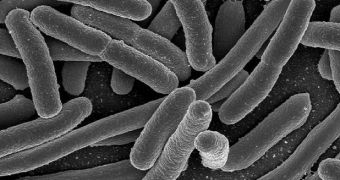Bacteria are extremely small organisms, and in many cases, they consist of only a few cells. There are species that only have a single cell, and therefore keeping it intact is a major priority. Over the course of their evolution, the organisms have set up a clever and ingenious defense mechanism against aggressive oxygen, which can easily disrupt the building blocks of their cells. Scientists have recently managed to determine this aspect of bacterial evolution, in a find that could see the development of new types of treatments and therapies against dangerous species of this class.
The team of experts that made the find is based at the Flanders Institute for Biotechnology (VIB), a life sciences research institute based in Flanders, Belgium. The institution is connected to the Vrije Universiteit Brussel. The team was led by scientist Joris Messens. The members came to this conclusion after observing the modifications that the intestinal bacterium Escherichia coli undergoes when its DNA is changed. The bacterial species showed a remarkable ability to revert all the damages that it suffered at the “hands” of aggressive oxygen, reverting back to “factory settings” with relative ease. The researchers therefore concluded that a repair mechanism must be at work.
According to the team, it may be that a similar, or perhaps even more advanced mechanism, is at work in human cells as well, protecting them from the huge amount of damage they are inflicted upon by oxidation, bad food and pathogens. Details of the amazing research appear in print in the latest issue of the top journal Science. The team also made an illustration of their finds available online. The discovery could have significant consequences for the field of medicine, in addition to devising new ways of killing harmful bacteria. Anti-aging cures come to mind as a possible application.
“Sulfurous proteins are extra-sensitive to oxidation. If they become oxidized, they lose their functioning. This research clarifies how the cell arms itself against this event. Scientists have wondered for a long time what the function of DsbG and DsbC is and the difference between them. Now, finally, we have an answer,” explains Messens. DsbG and DsbC are two proteins that apparently form the basis of the ingenious repair mechanism discovered in E. coli.

 14 DAY TRIAL //
14 DAY TRIAL //